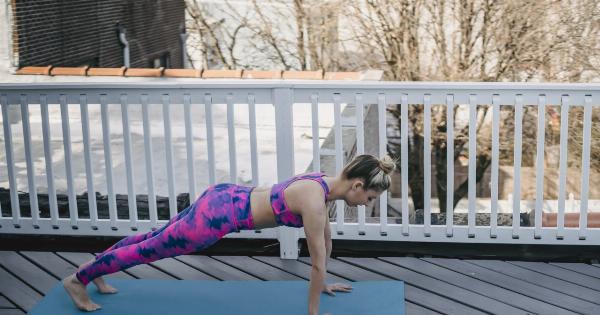Walking is a fantastic form of exercise that offers numerous health benefits. Whether you prefer walking in nature, around your neighborhood, or on a treadmill, you can amplify the benefits by incorporating Nordic-style walking poles into your routine.
Nordic walking, also known as pole walking or fitness walking, is a low-impact activity that engages the entire body and provides a more intense workout compared to regular walking.
The Origins of Nordic Walking
Nordic walking originated in Finland in the 1930s as a way for cross-country skiers to maintain their fitness during the summer months. Athletes started using ski poles while walking to replicate the pushing and pulling motion of skiing.
This technique gained popularity among other outdoor enthusiasts and eventually evolved into a standalone recreational and fitness activity.
The Technique
One of the key components of Nordic walking is the proper technique. It involves using specially-designed walking poles that are equipped with rubber tips and hand straps. The technique consists of four phases:.
Phase 1: Planting the Poles
In this phase, you start by planting the poles diagonally in front of your body. The poles should be angled backwards, with the tips pointing slightly behind you. As you walk, the poles will help propel you forward.
Phase 2: The Push-off
As you shift your weight onto the poles, push off with the opposite foot. This motion mimics the extension of the leg during cross-country skiing. The poles provide stability and reduce stress on your knees and joints.
Phase 3: Arm Swings
As you swing your arms forward, the opposite pole pushes into the ground, providing an added boost of propulsion. This synchronized arm and leg movement engages your upper body muscles, promoting a full-body workout.
Phase 4: Recovery
During the recovery phase, as your arm swings back, release the pole and allow it to follow your hand. This motion prepares the pole for the next plant and allows for a smooth transition between each step.
Benefits of Nordic Walking
Nordic walking offers a wide range of benefits for people of all fitness levels:.
1. Increased Caloric Expenditure
Walking with poles activates the muscles in your upper body, leading to an increased caloric expenditure compared to regular walking. This means you burn more calories and can achieve your weight loss goals more effectively.
2. Improved Cardiovascular Health
Nordic walking is an aerobic exercise that gets your heart pumping and increases your oxygen intake. Regular Nordic walking can improve cardiovascular fitness, lower blood pressure, and reduce the risk of heart disease.
3. Enhanced Full-Body Workout
By engaging your upper body with the use of poles, Nordic walking targets muscles that are typically not activated during regular walking.
It provides a balanced workout for your arms, shoulders, chest, and back, in addition to the benefits for your lower body.
4. Reduced Joint Impact
The use of poles while walking reduces the impact on your joints, making Nordic walking a suitable exercise for individuals with joint conditions or those recovering from injuries.
The poles help distribute the forces evenly, relieving stress on your knees, hips, and ankles.
5. Improved Posture
Nordic walking promotes an upright posture as you engage your core muscles to stabilize yourself while walking with poles. This can help alleviate back pain and strengthen your back muscles over time.
6. Increased Stability and Balance
The use of poles provides additional stability, especially on uneven terrains or slippery surfaces. Nordic walking can improve balance and reduce the risk of falls, making it suitable for individuals of all ages.
7. Stress Reduction and Mental Well-being
Walking in nature has been shown to reduce stress and improve mental well-being. Nordic walking takes this benefit even further by incorporating the rhythmic motion of the poles, which can have a calming effect and help clear your mind.
Getting Started
If you’re considering trying Nordic walking, follow these steps to get started:.
1. Choose the Right Poles
Invest in a pair of Nordic walking poles that are appropriate for your height and walking style. Adjustable poles are recommended, as they can be customized to your specific needs.
2. Wear Comfortable Shoes
Opt for comfortable walking or athletic shoes with good support. They should allow your feet to move naturally and provide enough cushioning to absorb the impact.
3. Learn the Technique
Take a lesson or watch instructional videos to learn the proper Nordic walking technique. It’s crucial to master the correct form to maximize the benefits and prevent injury.
4. Start Slowly
Begin with shorter walks and gradually increase your distance and pace as you become more comfortable with the technique. Listen to your body and don’t push yourself too hard in the beginning.
5. Incorporate Nordic Walking into Your Routine
Try to incorporate Nordic walking into your regular exercise routine. Aim for at least 30 minutes of Nordic walking on most days of the week to experience the full benefits.
Conclusion
Nordic walking is an excellent way to enhance your walking routine and reap the many benefits of this low-impact, high-intensity exercise.
By adding Nordic-style walking poles to your walks, you’ll engage your entire body and elevate your workout to new heights. Start slowly, master the technique, and enjoy the full-body workout and mental rejuvenation that Nordic walking has to offer.




























